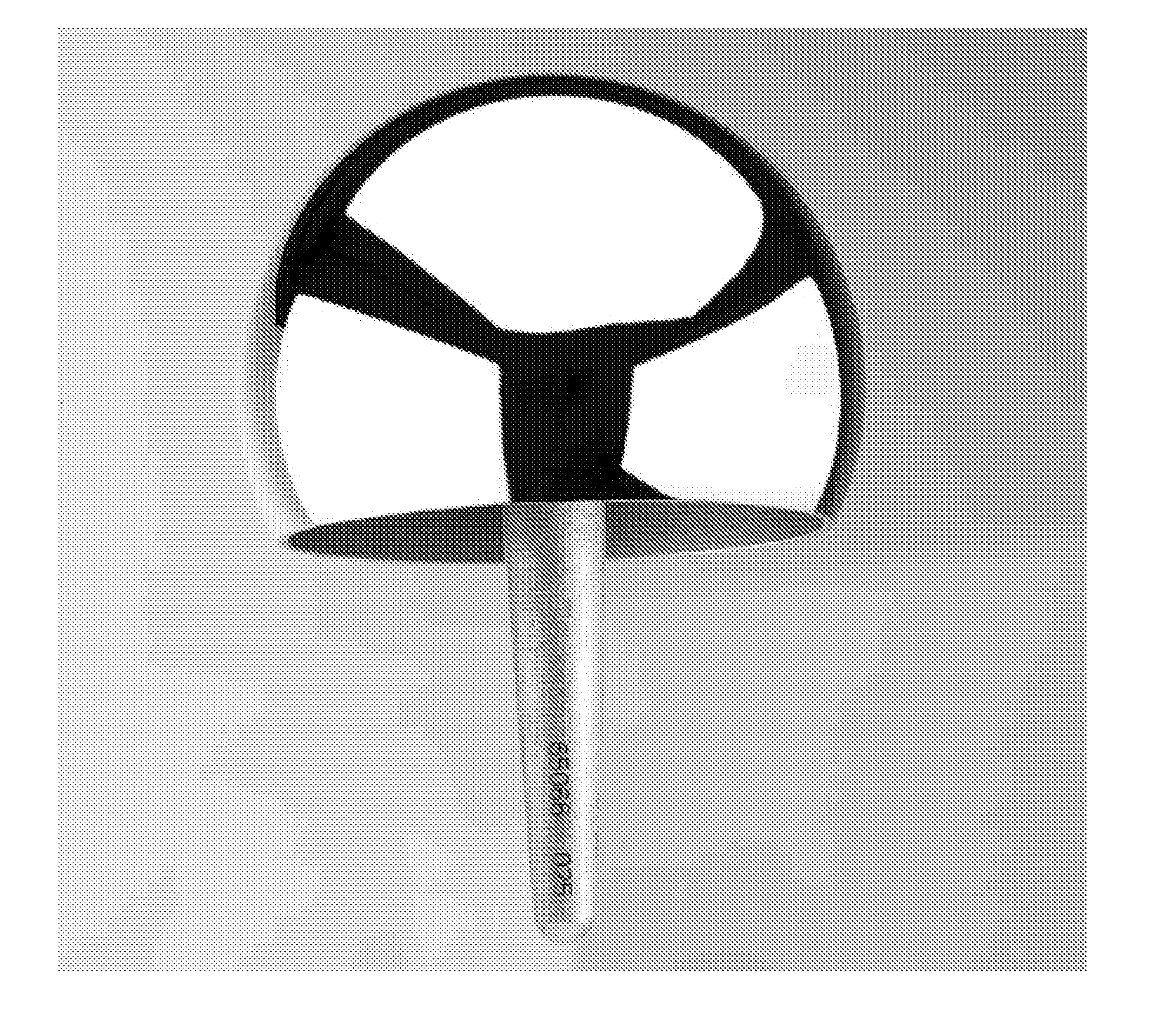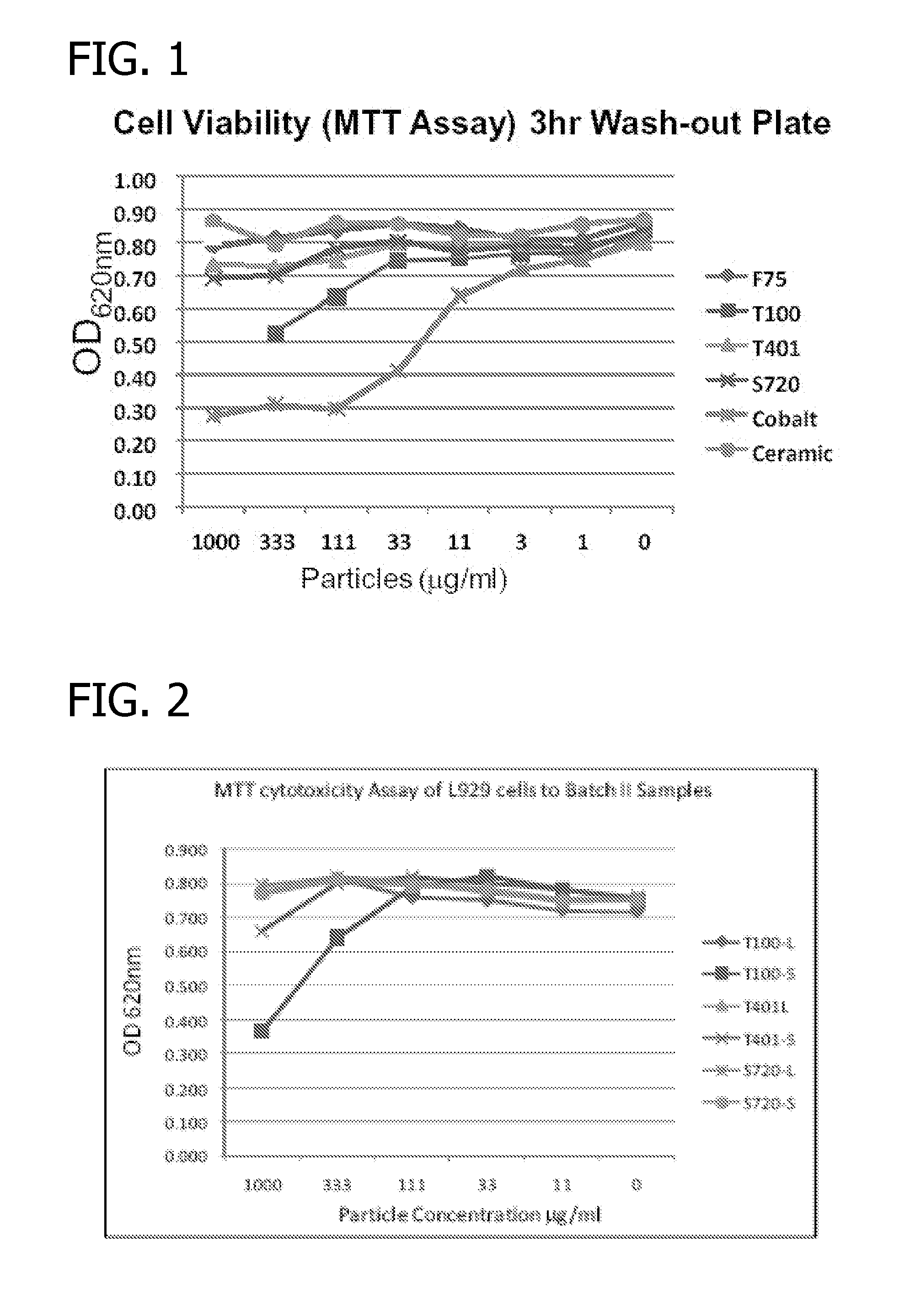Surgical orthopedic implants made from wear-resistant cobalt-chromium-molybdenum alloys
a technology of cobalt-chromium-molybdenum alloys and surgical implants, which is applied in the direction of bone implants, joint implants, prostheses, etc., can solve the problems of long-term bone loss and loosening of implants, adverse toxic, inflammatory, immunologic tissue reactions, and biochemical complications
- Summary
- Abstract
- Description
- Claims
- Application Information
AI Technical Summary
Benefits of technology
Problems solved by technology
Method used
Image
Examples
example i
[0037]The biocompatibility and cytotoxicity of the implants of the invention was tested by examining particle-induced inflammation using an in vitro model with macrophage cell lines according to ISO 10993. Cobalt and ceramic nano particles were used as reference points. The viability of the cells in response to the metallic particles was measured as absorbance at wavelength 620 nm. The results are presented in FIG. 1. Alloy T100 and pure Co exhibited strong evidence of cytotoxicity. Alloys 720 and T401 showed no cytotoxicity and behaved similar to alloy ASTM F75 and to the ceramic (inert) samples.
example ii
[0038]Coarse and fine metal particles of the 720 alloy were tested for cytotoxicity and compared to coarse and fine particles of T100 and T401. The results are presented in FIG. 2. The designation “L” is for larger particles which are essentially shards, while “S” designates smaller particles which are essentially dust.
example iii
[0039]Metal-on-metal wear resistance tests were conducted using ASTM F75 pins against discs made of ASTM F75, T401 and 720 according to the ASTM G99 pin-on-disc wear test standard. The results are shown in FIG. 3. ASTM F75 showed ten times more wear than 720 disc. Also, self-mated metal-on-metal tests were conducted for ASTM F75, T401, and 720. The results are shown in FIG. 4. ASTM F75 couple showed eight times more wear than the Stellite 720 couple.
PUM
| Property | Measurement | Unit |
|---|---|---|
| Fraction | aaaaa | aaaaa |
| Fraction | aaaaa | aaaaa |
| Percent by volume | aaaaa | aaaaa |
Abstract
Description
Claims
Application Information
 Login to View More
Login to View More - R&D
- Intellectual Property
- Life Sciences
- Materials
- Tech Scout
- Unparalleled Data Quality
- Higher Quality Content
- 60% Fewer Hallucinations
Browse by: Latest US Patents, China's latest patents, Technical Efficacy Thesaurus, Application Domain, Technology Topic, Popular Technical Reports.
© 2025 PatSnap. All rights reserved.Legal|Privacy policy|Modern Slavery Act Transparency Statement|Sitemap|About US| Contact US: help@patsnap.com



